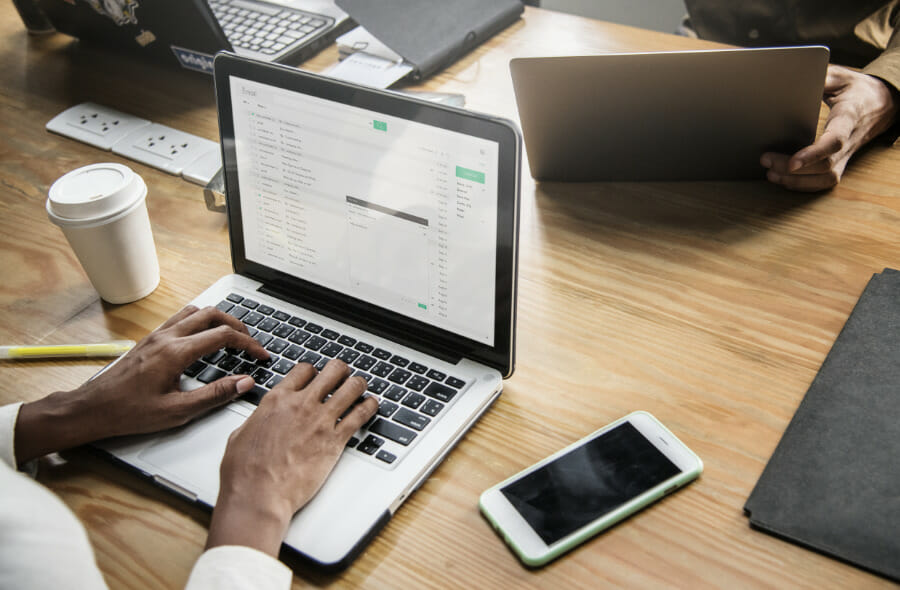People see professionals as a cut above regular society. Not only are they better educated, better paid, and dress better, but they are also expected to write in a professional manner that is a cut above everyone else.
It is not easy being a professional, and when you write professional e-mails, the content, the format, and the style are expected to be the best. To learn how to write professional e-mails, just continue to read our article. It provides you with the training you need to know, so you do a good job.
What Is a Professional Email?
A professional e-mail differs from a regular one by the content, the purpose, the style of writing, and the way the e-mail is structured. The writing is not friendly but business-like, personal greetings and comments are absent, and the purpose is for business reasons, not personal ones.
Other than that, the professional e-mail is just like a regular one in that you are communicating with someone on business or professional matters. These communications may be private and contain sensitive information.
They are not sent from personal e-mail addresses but from professional or business ones. Their tone is a cut above the ‘hi, how are you…’ personal e-mails and stick to business purposes.
Professional Email Examples
How to Format a Professional Email Message
This is not a hard task to perform. It is similar to writing a personal e-mail without using all the personal terminology. You would use business-like wording in a business format when writing your content. Use a hard copy business letter as an example to follow.
- Write a good subject line- this should hold the purpose of the e-mail so the receiver understands why it was sent to them
- Write a formal greeting- the word ‘Dear’ followed by the proper title should be used along with the person’s last name.
- The body of the e-mail- this should hold your name, why you are writing them and a short thank you paragraph at the end
- A formal sign off- the word ‘sincerely’ is best when you are not sure what word you should use.
- Your name- type your name after the ending and underneath it put your title, address, and contact information.
Mistakes to avoid in a Professional Email
A lot of people think that they know how to write a professional e-mail. It is not as simple as it sounds. They add in a lot of things that are best left out of their e-mail. Here are some things to avoid doing when you write yours:
- Writing a bad subject line- use capitals only when called for, don’t be vague, not everything is urgent, and keep it short
- Improper greetings- this can happen a lot in this world of disrespect. Make sure to use the proper accepted greeting, not one that may be trending
- Improper length- do not write a lot when a little will do and do not write a little when a lot is required. Find the right length for the e-mail’s purpose
- Failure to use spell check- always double-check spelling and grammar
- Use the wrong tone- leave out your emotions, use hyperlinks not URLs, forget emoticons and abbreviations, and do not use unnecessary words
- Failing to proofread- make sure there are no mistakes and that the sentences are coherent, easy to read, and understand. Look for errors.
A few tips to remember
Having a few tips to guide your writing should make it easier for you to spot any mistakes you accidentally put in your e-mail:
- Length does not equal quality – being too wordy can bore the other person and they will not read what you wrote. When you need to be, keep it brief, to the point, and have clarity
- Use the K.I.S.S. principle – Keep it simple, stupid. Avoid using long, complicated sentences. If your reader doesn’t understand what you wrote, they won’t know what you are talking about and respond poorly.
- Proofread – this cannot be emphasized enough. If you can’t see the mistakes get another person to help you do this.
- Make the e-mail scannable – use bullet points if applicable and other methods that allow the reader to scan the e-mail and get the gist of the content
- Don’t forget any attachments – this can be embarrassing when you leave them out of the e-mail
Technically, a professional e-mail is just like a professional business letter. Write the former in the same manner as the latter and you should be fine. Always be polite, courteous and use the right business words and format.
Looking For Document Management System?
Call Pursho @ 0731-6725516
Check PURSHO WRYTES Automatic Content Generator
https://wrytes.purshology.com/home
Telegram Group One Must Follow :
For Startups: https://t.me/daily_business_reads




